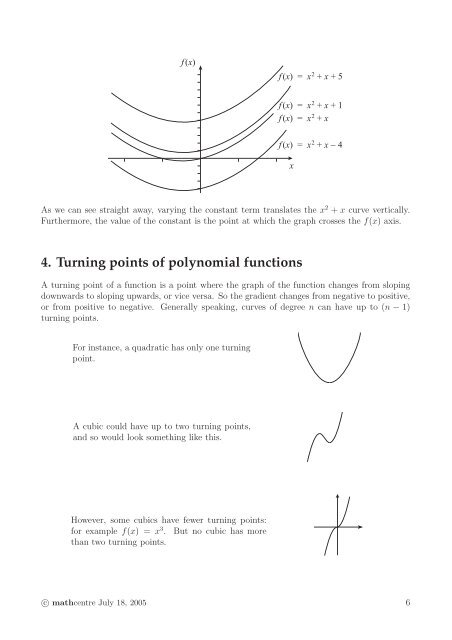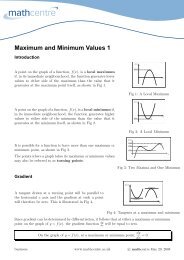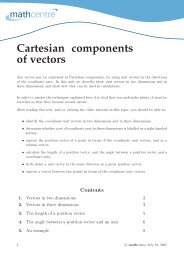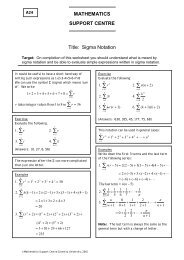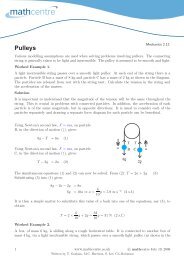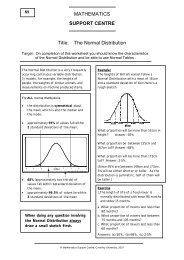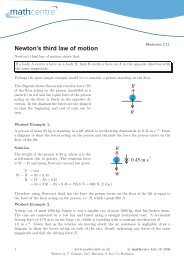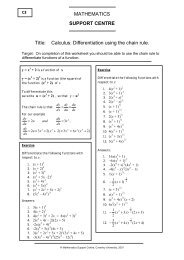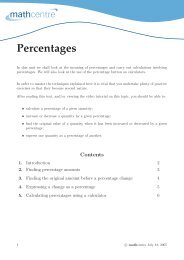Polynomial functions
Polynomial functions
Polynomial functions
You also want an ePaper? Increase the reach of your titles
YUMPU automatically turns print PDFs into web optimized ePapers that Google loves.
f (x)<br />
f (x) = x 2 + x + 5<br />
f (x) = x 2 + x + 1<br />
f (x) = x 2 + x<br />
f (x) = x 2 + x − 4<br />
x<br />
As we can see straight away, varying the constant term translates the x 2 + x curve vertically.<br />
Furthermore, the value of the constant is the point at which the graph crosses the f(x) axis.<br />
4. Turning points of polynomial <strong>functions</strong><br />
A turning point of a function is a point where the graph of the function changes from sloping<br />
downwards to sloping upwards, or vice versa. So the gradient changes from negative to positive,<br />
or from positive to negative. Generally speaking, curves of degree n can have up to (n − 1)<br />
turning points.<br />
For instance, a quadratic has only one turning<br />
point.<br />
A cubic could have up to two turning points,<br />
and so would look something like this.<br />
However, some cubics have fewer turning points:<br />
for example f(x) = x 3 . But no cubic has more<br />
than two turning points.<br />
c○ mathcentre July 18, 2005 6


